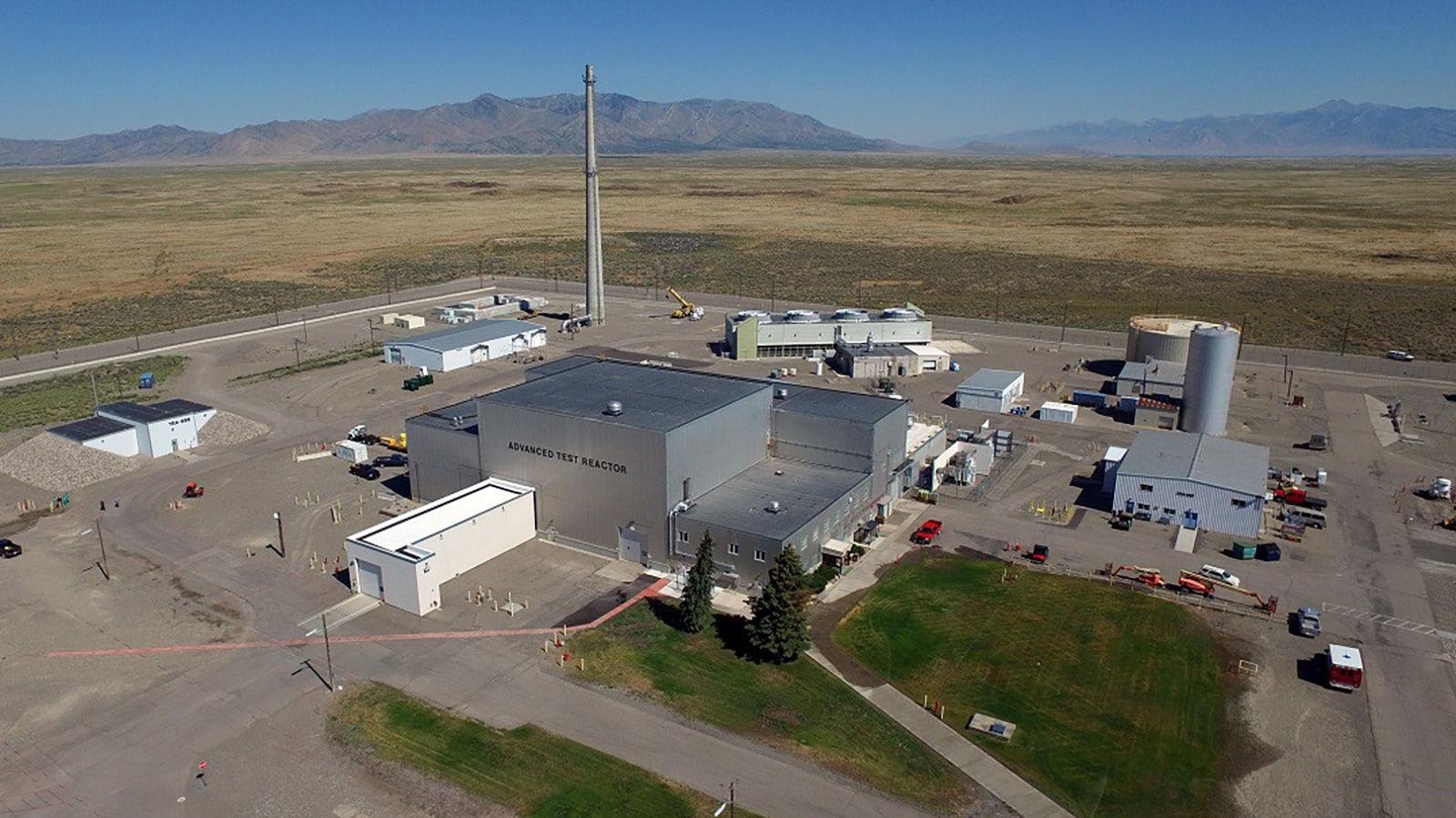Since the beginning of the COVID-19 pandemic four years ago, the federal government’s Idaho National Laboratory has focused attention on building closer ties with Wyoming and other states on research and deployment of advanced nuclear technologies.
The effort has coalesced around a push that the Department of Energy nuclear lab in Idaho Falls calls the Frontiers Initiative, an effort is designed to help the United States stay competitive with low-emission industrial activity through leading-edge nuclear technology.
To date, Wyoming, Idaho, Alaska and Utah have joined this initiative focused on “nuclear energy first mover states,” said Steven Aumeier, senior adviser to strategic programs with the Idaho National Laboratory.
INL is one of the nation’s national laboratories that performs nuclear energy research for commercial and military applications.
Nearly two years ago, the Wyoming Energy Authority signed a memorandum of understanding agreeing to collaborate on the research, development, demonstration and deployment of nuclear energy technologies.
The initiative is touching all corners of Wyoming.
“There’s a lot of leadership in Wyoming,” Aumeier told Cowboy State Daily. “This train of reduced emissions has left the station. Wall Street is telling industry that they need to reduce emissions if they want capital.”
The Nuclear Solution
Wyoming has its fingers on the pulse of this broader effort focused on nuclear technologies, he said.
“This isn’t just about a reactor or putting electrons on the grid, but this is about Wyoming becoming the first mover in this new paradigm shift,” he said. “Wyoming is pathfinding, and what it does has significant implications for the security of our country.”
Aumeier pointed to several sectors around the state that are helping to define the Frontiers Initiative.
Mike Wandler, CEO of Gillette-based L&H Industrial Inc., has been a huge catalyst for the initiative, Aumeier said.
“He is a real leader who has a global vision,” he said.
In recent months, L&H Industrial Inc. formed a new business unit, Evercore Energy, and appointed Marcio Paes Barreto as managing director to build up a nuclear services business from scratch.
The business model is still under development, but it would be a kind of one-stop shop for everything from consulting services on rolling out a small, modular nuclear reactor to possibly assembling parts.
Barreto was formerly a director of industrial development with the WEA and helped with economic development for the Wyoming Business Council.
In a related matter, Gillette Mayor Shay Lundvall said last month that he wanted to bring a components manufacturer and assembly factory for very tiny nuclear power plants to the coal-rich Powder River Basin.
He said that discussions have begun about bringing a small nuclear plant factory to the city’s still-to-be developed Pronghorn Industrial Park, located next to its sprawling 1,000-acre Cam-plex.
Going Nuclear
“Wyoming needs to think of plugging nuclear into the low emission landscape, which is consistent with what has been pushed by [Gov. Mark Gordon],” said Aumeier, who urged engagement with communities and “honestly answer questions” that arise about safety, economics and job opportunities.
Aumeier also is working with others in Wyoming on the Frontiers Initiative.
These include the University of Wyoming with the hiring of a nuclear subject matter expert; TerraPower, which is building a Natrium reactor demonstration project in southwestern Wyoming in Kemmerer; and BWXT Technologies Inc., which is participating with the WEA to understand the state’s “supply chain” of businesses that could lead to establishment of a nuclear components factory — like the one in Gillette.
The energy starved-trona patch in southwestern Wyoming also is exploring possible opportunities with tiny nuclear reactors, Aumeier said.
Pacific Soda LLC, which said recently that it is looking to develop and build a multibillion-dollar project in Sweetwater County, considered a small nuclear reactor for its power needs but opted to go with a cogeneration power plant near a major natural gas line owned by Williams Cos.
Nonetheless, David Steed, a permitting and regulatory affairs lead for the company, told Cowboy State Daily recently that Pacific Soda is taking a “high level look at nuclear plants” given that its trona operation could have a mining permit for more than 30 years.
Last fall, Tata Chemicals signed an agreement with BWXT Advanced Technologies to study development of small-scale nuclear reactors that will produce up to 100 megawatts of electricity for its trona manufacturing facility and trona mine in Green River.
“From a technology standpoint, you have to look at future sources,” said Genesis Alkali spokesman David Caplan. “You have to look at a variety of technologies in the commodities business to keep costs down, be efficient and produce more volume.”
Caplan declined to comment on whether his trona company is exploring an option of building a small nuclear reactor.
Rocky Mountain Power, the electric utility unit of Oregon-based PacifiCorp, announced in its integrated resource plan last year — a planning document that takes a snapshot look at its future operations — that small, modular nuclear reactors are under consideration.
In addition to the Kemmerer plant, PacifiCorp and TerraPower said they would evaluate the possibility of building up to five additional Natrium reactors in its service territory by 2035.
“One of the defining features of advanced nuclear energy going forward is having a variety of sizes and configurations of reactors that service all types of industry,” Aumeier said.
Even huge power-hungry data centers surrounding F.E. Warren Air Force Base in Cheyenne could see nuclear powered generators, said Aumeier, who pointed to Microsoft Corp.’s recent venture into next-generation nuclear reactors needed to power its data centers and artificial intelligence ambitions.
“Companies are moving down this road of low-emissions. It’s not driven by federal policy but the reality of doing business,” he said.
Pat Maio can be reached at pat@cowboystatedaily.com.





